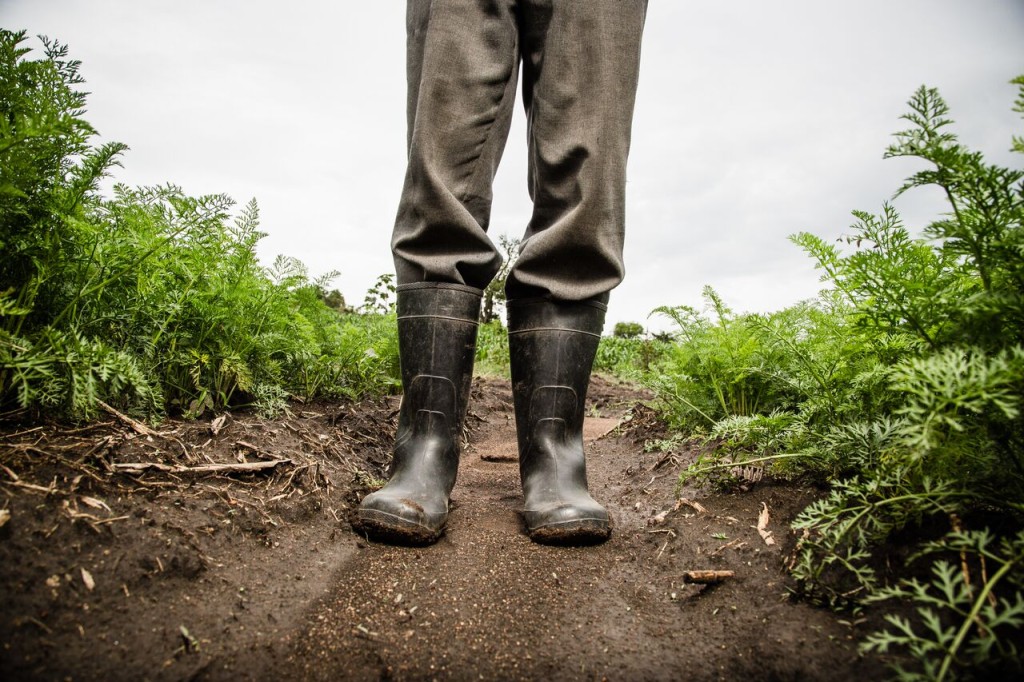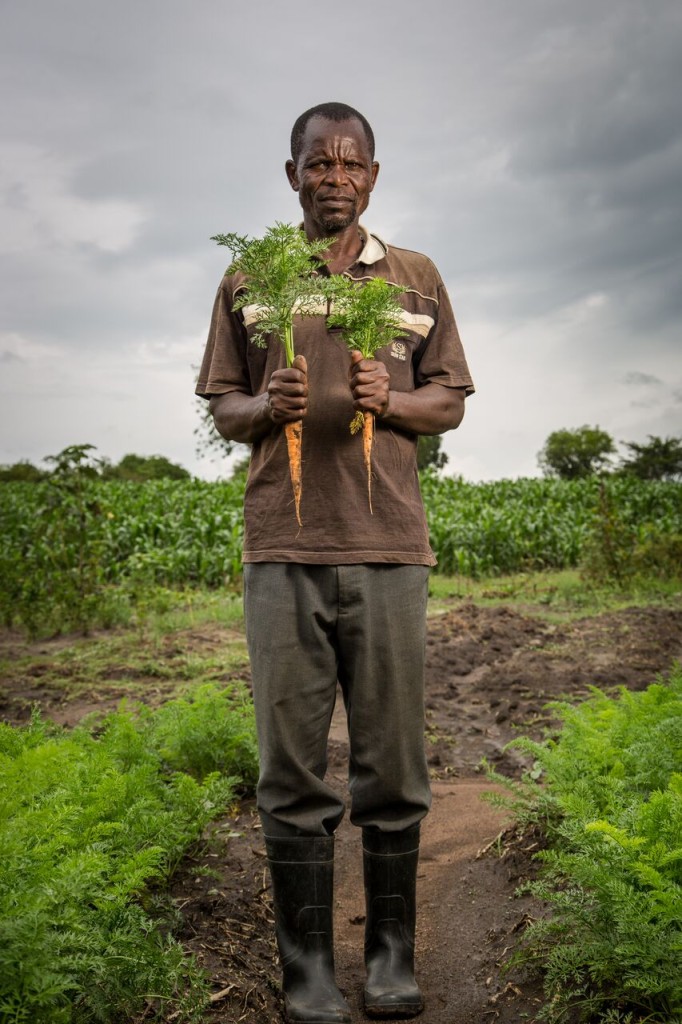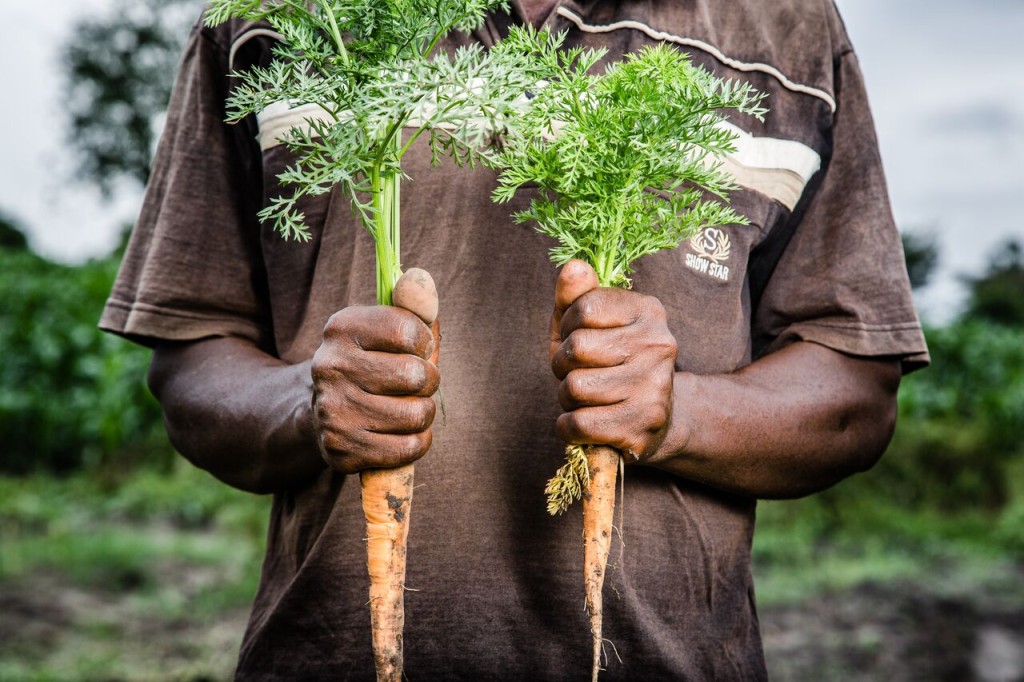Visiting Mbalibali Village Vegetable Gardens
By Stuart Butler
One afternoon during my recent stay at Asilia Africa’s Oliver’s Camp in Tanzania’s Tarangire National Park, I was talking to head guide trainer, Pietro Luraschi, about tourism and its impact on local communities in East Africa. When we spoke specifically about Asilia, I noticed how Pietro described Asilia not as a tourism company, but as a conservation company. A short while later he went on to say how conservation in East Africa could never work without the support of local communities and that if companies like Asilia didn’t have the communities that lived next to the protected areas on-board, then all the hard work he and the rest of the Asilia team were doing would be meaningless.
Visiting the Vegetable Gardens of Mbalibali Village
A few days later I was right up in the far north-west of the Serengeti at Asilia’s Sayari Camp. Low storm clouds were rumbling overhead, a pride of lions took down a zebra after dark almost right outside one of the guest tents, and on the plains that merged into Kenya’s Maasai Mara National Reserve, I’d watched a leopard slinking through the grass with his eye on some distant Thompsons gazelle. It was the end of the tourist season and I had the camp almost to myself, but that night, as I ate a superb dinner in the company of the delightful hosts, Annabel and Roger, I was asked if I would like to give the following mornings game drive a miss and instead go and visit an Asilia-supported community project. At first, I was going to say no. Why bother to visit a muddy village when I could instead look for lions, but then I remembered what Pietro had said and suddenly I was intrigued, “Yes”, I told Roger, “I would love to go and visit the village”.
The next morning my guide, Dickson Munis, and I set off after breakfast. The rains had made the rough earth road slippery and the going was slow. After an hour or so we climbed up onto an escarpment and left the Serengeti park. Instantly the landscape changed. Gone were the tones of the savannah and instead we were in a delicate patchwork of lush green fields heavy with maize. We skirted the edge of the village of Mbalimbali and dived down sludgy mud lanes that were barely wide enough for our jeep. After five more minutes of twists and turns, the driver pulled to a halt outside a large mud-walled house with pots of hot-pink flowers outside the door. Half-a-dozen adults and a mass of children were waiting for us and as soon we’d got out of the jeep we were handed blue plastic cups filled with a sugary liquid barley porridge and a plate of sweet potatoes. This, Dickson told me, was the Asilia supported farm and vegetable project.
Forging the way Forward
Looking out across rows of radishes, carrots, lettuces, cucumbers and quite a lot of stuff that my not very green fingers were unable to identify Dickson recounted how, in the past, the villagers here had really only grown maize, and that when Asilia had launched the vegetable project the villagers had had to learn new agricultural skills as they worked out how best to grow the wide array of different vegetables Sayari Camp required. As we walked down the hillside past rows of tomatoes and beans, Dickson told me how the project had only been going a year but was already proving successful for both the camps and the villagers. In fact, in the year since the Serengeti vegetable project was launched, (Asilia have been supporting vegetable projects in other parts of Tanzania for a little longer) Asilia have started to support five different vegetable projects in five different villages close to some of their Serengeti camps.
Dickson explained how Asilia supplied the seeds and a guaranteed market and price for the produce, but that the villagers had to organise the land themselves and pick up the techniques needed for growing these new, and what to them were sometimes probably quite exotic vegetables. But their inbuilt farming ability had in itself initially led to a bit of a problem. They were just too good at growing the vegetables! As different vegetables came into season Sayari Camp would suddenly find itself inundated with cucumbers, a month later and camp guests had better be fond of tomatoes because just as suddenly there would be hundreds of them and a cucumber wouldn’t be available for love nor money! Fortunately for those allergic to tomatoes things have sorted themselves out now and the villagers involved in the project have learnt to time the harvests and planting of different crops so that camp guests don’t face the prospect of a flood of potatoes for dinner.
Supporting Our Local Communities
Wilson Wameura is one of the farmers involved in the Mbalimbali vegetable project and I asked him what his opinions were on the vegetable project and safari companies such as Asilia, “Before this started we got nothing from the [Serengeti] park, but after Asilia started to support us with the vegetable project we started to see some potential from tourism”, he went on to explain how before they had used to grow some vegetables to sell at the market, “But if they didn’t sell then we made no money, but Asilia now takes all the vegetables we can grow and they pay us a good price”.
In a world filled with businesses running ‘feel good’ projects it’s easy to be dismissive of such an apparently small effort as donating a few seeds and guaranteeing an income. But, in the subsistence farming villages that ring many of East Africa’s protected areas, this guaranteed income is a big thing. It means people can plan, it means they can pay school fees and it frequently changes attitudes to conservation. In the past, it was common for many villagers living on the borders of Africa’s protected areas to regard the parks as being nothing but the preserve of rich foreigners and of no benefit to them. Today, though, as conservationists realise that conservation is nothing without the support of locals, its projects like Asilia’s vegetable project that are changing attitudes and, indirectly, helping to conserve wildlife for the benefit of the rest of us.
Asilia have taken this thought to heart and when I left Tanzania and returned home I downloaded Asilia’s Positive Impact Report for 2015 (yeah my Friday nights aren’t wildly exciting…) and was surprised to discover that Asilia’s ‘small efforts’ actually amounted to them contributing 6.9 million US dollars to the national parks, wilderness areas and national economies of East Africa in 2014 and donating (through clients donations) US$216,000 to community development projects. In addition, thirty percent of Asilia employees are from local communities (as in the closest communities to their camps). It was actions like these that led to Asilia being awarded first place in the Tourism for Tomorrow Business Awards 2014, which is arguably the highest accolade in the global travel and tourism industry.
Driving away from Mbalimbali village and back into the Serengeti National Park, mud flicking up behind us and the black storm clouds once again building up and threatening rain, a group of zebra hastily ran past us. Perhaps something had spooked them. Maybe it was a lion? Seeing them made me wonder for an instant what I’d missed that day in the Serengeti’s wildlife soap opera, but a second later I shrugged and realised that I actually didn’t care. Having a lunch of sweet barley porridge with the farmers of Mbalimbali had been worth a dozen lion encounters.
The post Visiting Mbalibali Village Vegetable Gardens appeared first on Asilia Africa.
More Positive Impact Articles

Electric Vehicles: The Future Of East African Safari Travel?
12 January 2020October 2019 saw the arrival of our first electric, solar-powered safari vehi...

Its Our 15th Birthday: Celebrating 15 Years of Making a Genuine Difference
08 November 2019This year, we're celebrating our 15th birthday and commemorating 15 years of...

World Tourism Awards 2019: Asilia Recognised For Our Positive Impact
01 November 2019The World Tourism Awards acknowledge, reward, and celebrate excellence across...

Supersized Traditional Maasai Necklace
21 October 2019In 2009, we became a founding member of the Mara Naboisho Conservancy and sin...








